The world of HVAC (Heating, Ventilation, and Air Conditioning) is complex, and navigating the use of refrigerants requires careful attention, especially when dealing with flammable varieties. This discussion provides a focused examination of four such flammable refrigerants, emphasizing the importance of recognizing their potential hazards in commercial and industrial settings.
Refrigerants are crucial components in cooling systems, but they are not without risks. Beyond their core function of heat absorption and release, some refrigerants possess inherent dangers, notably flammability. To navigate these risks effectively, industry professionals rely on the guidelines set forth by ASHRAE Standard 34. This standard categorizes refrigerants based on their toxicity and flammability potential, facilitating safer handling and application.
Classification of Refrigerant Flammability
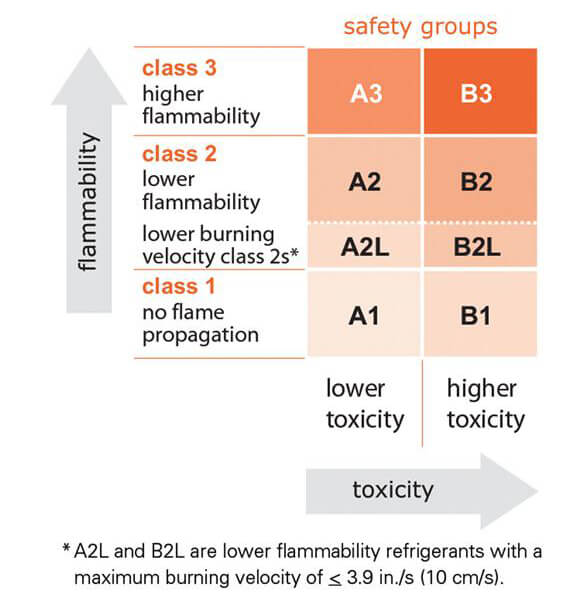
For a clear understanding, let’s explore the ASHRAE-defined flammability categories of refrigerants:
- Class 1 Refrigerants: These are non-flammable under typical operating conditions, which include a temperature of 140°F and a pressure of 14.7 psi. They are preferred in environments where safety is the paramount concern.
- Class 2L Refrigerants: Characterized by their lower flammability at standard temperature and pressure. These refrigerants burn slowly and are considered for systems where minimal flammability is crucial.
- Class 2 Refrigerants: Flammable refrigerants in this category have a lower heat of combustion and a higher threshold for flammability. They require careful handling and are typically used in controlled environments.
- Class 3 Refrigerants: This group includes highly flammable refrigerants, which have either a higher heat of combustion or a lower flammability threshold. Their use is restricted to applications where their properties can be managed with advanced safety protocols.
Properties and Safety Profile of R32
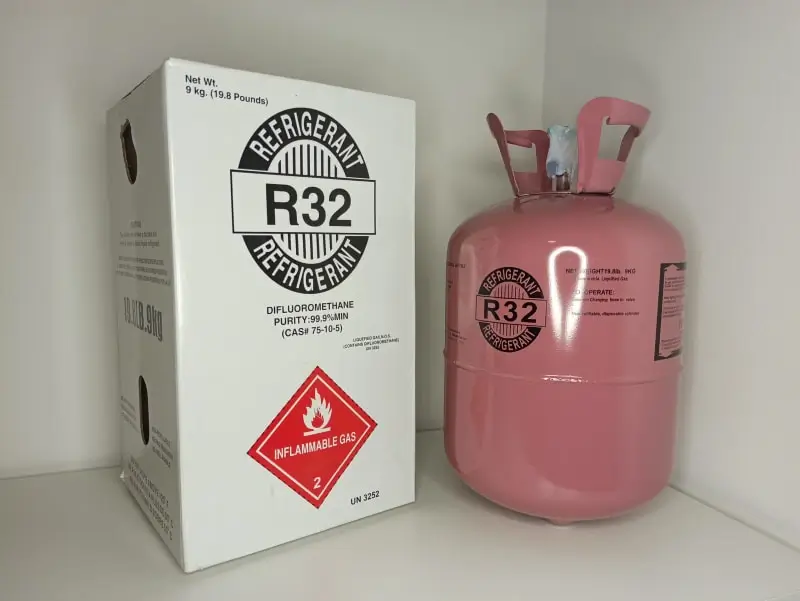
R32 is a colorless and odorless gas with an ASHRAE safety classification of A2, denoting its lower toxicity but higher flammability. As an emerging substitute for Freon, R32 boasts superior thermodynamic properties, such as:
- A low boiling point, facilitating efficient heat exchange
- Reduced vapor pressure, lowering the risk of pressure-related incidents
- A high refrigeration coefficient, which translates into effective cooling capacity
- Negligible ozone depletion potential, making it environmentally preferable
- Minimal greenhouse effect, contributing to its eco-friendly credentials
However, despite these advantages, R32 is both flammable and explosive, with a combustion limit in the air ranging from 15% to 31%. This means that in the presence of an open flame, R32 can ignite or explode, posing significant risks during installation and maintenance.
Due to its lower viscosity coefficient and higher thermal conductivity, R32 can improve the energy efficiency of HVAC systems. Nonetheless, the flammability of R32 necessitates stringent safety protocols. Air conditioning installation and maintenance professionals must approach R32 with a heightened awareness of potential hazards. It is imperative that installation and welding of R32-containing equipment be performed with a vacuum to mitigate risks.
The utilization of R32 is a deliberate choice for HVAC systems where its benefits can be safely harnessed. By acknowledging the safety issues and adhering to recommended handling procedures, HVAC professionals can incorporate R32 effectively, ensuring both the performance enhancement and safety of their cooling systems.
Properties and Safety Profile of R290
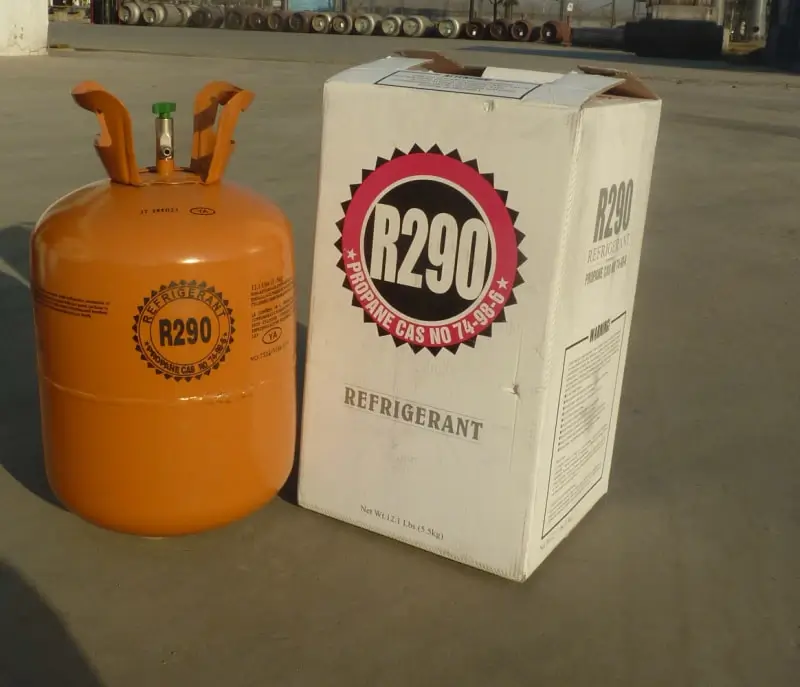
R290 stands out for its negligible impact on ozone depletion and its exceptionally low Global Warming Potential (GWP), with an ODP value of 0 and a GWP value of less than 20. These figures present a stark contrast to commonly used refrigerants, as demonstrated by the following comparisons:
- R22, with an ODP of 0.055 and a GWP of 1700
- R404a, with zero ODP and a GWP of 4540
- R410a, with zero ODP and a GWP of 2340
- R134a, with zero ODP and a GWP of 1600
- R290, with an ODP of 0 and a GWP of merely 3
The high latent heat of evaporation of R290 enhances its cooling efficiency, while its excellent fluidity promotes effective refrigerant circulation within systems, leading to high operational efficiency.
Despite its eco-friendly profile, R290’s classification as an A3 refrigerant underscores its flammable and explosive characteristics. Consequently, there are stringent limits on its fill volume within HVAC systems to ensure safety. During the application of R290:
- The refrigerant must be handled in well-ventilated areas where evacuation procedures are in place to prevent the accumulation of gas.
- Open flames are strictly prohibited near R290 refrigerant handling areas, as R290 can form explosive mixtures when mixed with air (oxygen).
- The risk of ignition from heat sources or open flames necessitates rigorous safety measures during installation and maintenance operations.
Properties and Safety Profile of R600a
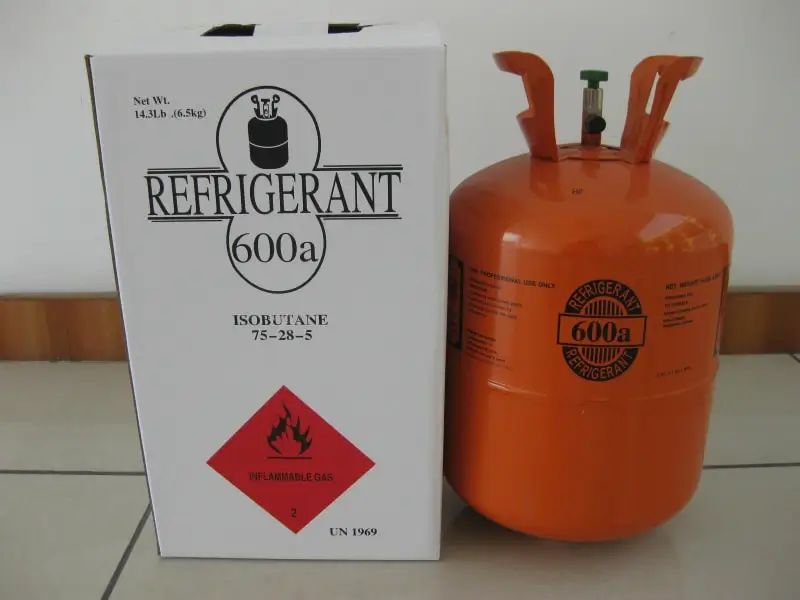
R600a, or isobutane, represents a new class of hydrocarbon refrigerants that are shaping the future of environmental sustainability in the HVAC sector.
R600a is crafted from natural components, resulting in a non-toxic refrigerant that is benign to both the ozone layer and the global climate. It is a prime choice for eco-conscious applications, displaying several advantageous features:
- High latent heat of evaporation for effective cooling performance
- Strong cooling capacity to meet rigorous HVAC demands
- Excellent fluidity, ensuring efficient refrigerant movement
- Low delivery pressure, reducing stress on system components
- Minimal power consumption, enhancing system energy efficiency
- Quick recovery of load temperature, maintaining consistent cooling
- Compatibility with a variety of compressor lubricants, offering versatility in system design
In its pressurized state, R600a exists as a colorless transparent liquid and, when released, as a colorless transparent gas. It has been adopted predominantly as a replacement for R12 refrigerant, with its primary use now being in household refrigeration equipment.
The safety level of R600a is classified as A3, indicating its high flammability. Its explosive limits range from 1.9% to 8.4% by volume when mixed with air. The following safety precautions are crucial:
- R600a should be handled in well-ventilated areas to prevent the formation of explosive mixtures with air.
- Exposure to heat sources, open flames, and oxidizers must be strictly controlled as they can trigger combustion and explosive reactions with R600a.
- Its vapor density is greater than air, allowing it to spread at lower levels across distances and posing a fire risk if it encounters ignition sources.
The implementation of stringent safety protocols is essential when working with R600a to mitigate risks associated with its flammability. These measures ensure that the significant environmental and operational benefits of R600a can be safely harnessed in refrigeration systems, contributing to the broader goal of ecological preservation within the HVAC industry.
Properties and Safety Profile of R717
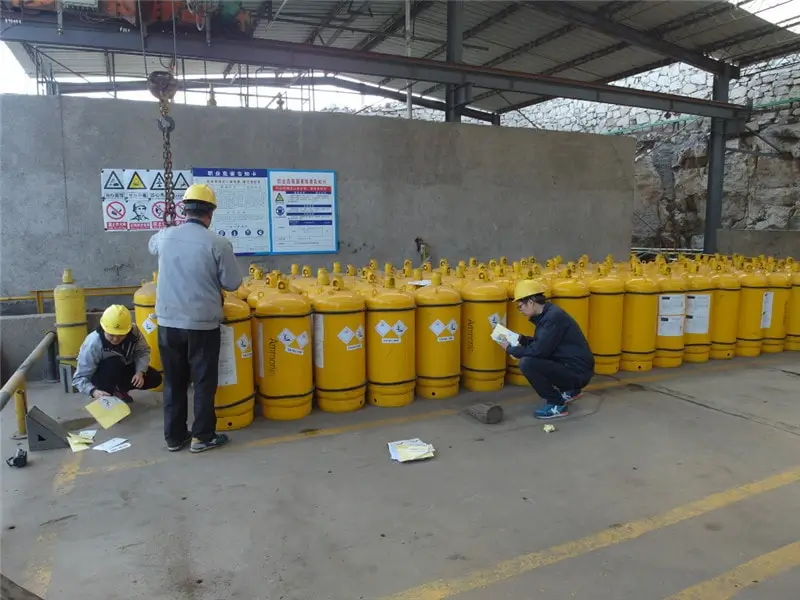
Among the various refrigerants discussed, ammonia (R717) is classified distinctly due to its toxicity. It holds a classification as a level 2 toxic medium, indicating substantial hazard potential. Exposure to ammonia vapor, even at concentrations as low as 0.5*0.6% by volume, can lead to poisoning if inhaled for durations as brief as thirty minutes.
Due to the hazardous nature of ammonia, heightened vigilance is paramount during the operation and maintenance of systems using this refrigerant. It is a medium-temperature refrigerant, which, in its pure form, does not degrade lubricating oils. However, the presence of moisture can diminish the lubrication quality. Additionally, materials such as copper and copper alloys are avoided in ammonia refrigeration systems due to corrosion concerns.
Ammonia offers several benefits in its role as a refrigerant:
- Accessibility and low cost make it an economical option.
- Moderate operating pressures aid in the stability of refrigeration systems.
- A high unit refrigeration capacity ensures effective cooling.
- The high heat release coefficient improves the efficiency of heat exchange.
- Its negligible solubility in oil facilitates easier system maintenance.
- Ammonia is detectable by its odor, allowing for rapid leak identification.
- Environmentally, ammonia is favorable with no ozone layer depletion potential and no greenhouse effect contribution.
However, the use of ammonia comes with notable disadvantages:
- Its pungent odor is irritating and can serve as a warning of leaks.
- Toxicity poses health risks, requiring strict adherence to safety protocols.
- Flammability and potential for explosion demand careful concentration control.
- Corrosivity to certain metals necessitates selective material use in system components.
Specific safety thresholds must be observed:
- Ammonia concentrations in the air should not exceed 0.02 mg/L to prevent toxic exposure.
- Flammability is a concern at room temperature, with an explosive limit between 16% to 25%.
- The most susceptible concentration for ignition is at 17%, where maximum explosion pressure reaches 22.5%.
It is imperative that facilities employing ammonia refrigeration systems implement comprehensive safety measures, including robust detection, containment, and emergency response strategies, to mitigate the risks associated with this potent refrigerant.
Conclusion
Concluding our exploration of HVAC refrigerants, it’s clear that each substance—R32, R290, R600a, and R717—has a role to play in achieving a balance between environmental stewardship and thermal efficiency. However, the flammable and toxic nature of these refrigerants necessitates rigorous safety measures. Industry professionals must navigate these parameters with precision, ensuring that the implementation of such refrigerants aligns with the stringent standards set by ASHRAE and other regulatory bodies. Embracing these refrigerants responsibly paves the way for sustainable, safe, and efficient HVAC systems in our commercial and industrial landscapes.
